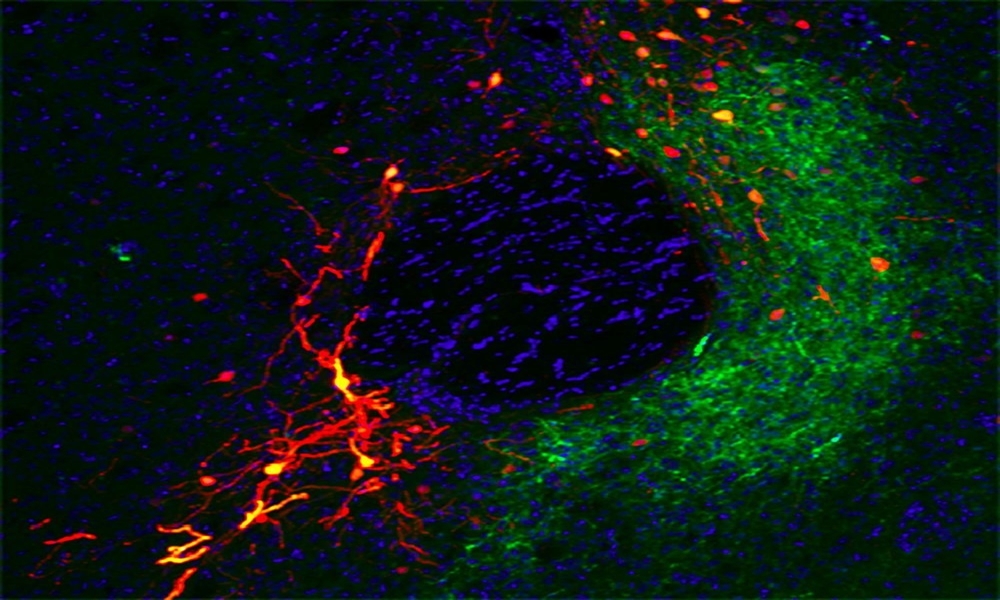
WELCOME TO THE BARAM LAB WEBSITE
Our lab is focused on the influence of early-life experiences on developing brain circuits and on the underlying plasticity mechanisms that promote health or disease. We probe these at molecular, cellular, circuit and functional/behavioral levels using viral- and chemo-genetic techniques, in vivo electrophysiology and imaging, and epigenomic and single-cell transcriptomic methodologies.
Current Topics of Research in the Lab Include
a) How early-life adversity/stress provokes anhedonia, and the underlying perturbations of the maturation of reward/pleasure circuitry.
b) How early-life adversity/stress provokes spatial memory deficits and the transcriptional / epigenomic mechanisms that re-program hippocampal neurons and circuits
c) How prolonged early-life seizures, especially those associated with fever, disrupt the maturation of hippocampal circuits and memory processes
d) Intra-individual methylomics in rodents and humans as predictive biomarkers of early-life adversity-induced cognitive and emotional problems
e) How multiple concurrent acute stresses, such as occur in mass shootings and natural disasters, impact memory processes in males and females.
Tallie Z. Baram
Tallie Z. Baram, MD, PhD is the Danette Shepard, Bren and distinguished professor at UCI School of Medicine. She is a developmental neuroscientist and child neurologist who has focused her research efforts on the influence of early-life experiences on brain maturation and the underlying mechanisms. Throughout her career, Baram has studied this topic in two broad contexts, pertaining, respectively, to stress-related and activity-dependent plasticity: a) How early-life experiences including adversity/stress promote enduring vulnerability to cognitive and emotional disorders; and b) how early-life seizures, especially those associated with fever, can convert a normal brain into an epileptic one.
A common thread of Baram’s research program is the use of multiple and trans-disciplinary technologies and levels of analysis including molecular, cellular and circuit methods and cross-species studies. She employed these to uncover how adverse early-life experiences sculpt memory-, stress- and reward-related circuit maturation. In this context, she has uncovered novel types of adversity in humans and rodents (unpredictable sequences of sensory signals) that contributes to aberrant circuit maturation (e.g., Birnie & Baram, Science, 2022). Additionally, she has focused on the overarching hypothesis that neuronal populations and projections expressing the stress-related peptide CRH may be particularly vulnerable to early-life adversity, resulting in disrupted operations of networks that include them. This notion has led to identification of novel CRH+ reward-circuit projections, and assessments of established CRH-cell populations using single-cell transcriptomics.
The Baram lab has pioneered naturalistic, translationally-relevant paradigms of early-life adversity (ELA) that have been embraced world-wide, and demonstrated the causal influence of ELA on cognitive and emotional health via convergent actions of multiple mediators (including locally-synthesized CRH). More recently, through collaborative work in her NIH funded Conte Center and a recent collaborative award with CHOC from the California Initiative to Advance Precision Medicine, she is translating her discoveries back to the clinic. Her work has been published in leading journals (e.g., Science, Nature Rev Neurosci, Nature Medicine, Nature Neurosci) and cited over 30,000 times (H = 96, google scholar). Baram’s discoveries have been universally recognized, apparent from awards including the NIH NINDS Javits Merit Award, premier Research Awards of the AES (2005), CNS (2013), ANA (2014) and AAN (2018), and a Public Impact Award (CNLM, 2022).
Baram strives to contribute to the scientific community by, for examples, chairing NIH study sections and involvement in editorial boards and professional organizations, including ACNP. She is passionate and committed to mentoring, with emphasis on scientific rigor and inclusivity: Baram is PI of one of only two NIH-funded T32s focused on Epilepsy, and mentor of several recent K99 and F30 awardees. Many of her trainees, from diverse racial and geographical backgrounds are now contributing independently and successfully to our understanding of the brain in health and disease.
Lab News:
OCTOBER 2025 | Congratulations to Lara on receiving the Stanley Behrens Health Sciences Research Award!
Congratulations to Isabelle for being awarded Excellence in Research and a UROP fellowship for her project “How Early Life Adversity Shapes Motivation and Brain Function” under the supervision of Mason and Dr. Baram!
AUGUST 2025 | Congratulations to Mason on his Advancement!
In this recent pre-print, co-first authors Madi and Bianca address discrepancies in the location and extent of the human PVT utilizing high-power MRI and histological studies of a post-mortem human brain. They found that the human PVT includes more posterior area than previously appreciated by MRI studies, but that this has minimal impact on functional connectivity. The increased posterior area of the human PVT introduces important opportunities to examine the posterior in human behavioral fMRI paradigms. This paper is available in bioRxiv: A combined neuroantaomy, ex vivo imaging and immunohistochemistry defined MRI mask for the human paraventricular nucleus of the thalamus (link to paper)
MARCH 2025 | Congratulations to Rachael on receiving the CNLM Director’s Excellence Award!
Congratulations to Lara on receiving the Norman M. Weinberger Award!
Rachael, Dr. Chen, Annabel & Brinda found that high physiological hippocampal estrogen levels were required for ATS-induced episodic memory disruption and the concurrent sensitization and generalization of fear memories in both male and female mice. Pharmacological and transgenic approaches demonstrated signaling via estrogen reception (ER)α in males and, in contrast, ERβ in females, as the mechanisms for these memory problems. This paper is available in bioRxiv: Unexpected mechanisms of sex-specific memory vulnerabilities to acute traumatic stress (link to paper).
FEBRUARY 2025 | In this collaboration, researchers found that combining screening with the QUIC-5 and an adverse early life experiences (ACEs) measure in the real-world setting significantly improved prediction of child health outcomes. For both screeners, increasing exposures were associated with a high probability of mental or physical health diagnosis. Across most diagnoses, PEARLS and QUIC provided unique predictive contributions. Importantly, for three outcomes (depression, obesity, sleep disorders) QUIC-5 identified vulnerable individuals that were missed by PEARLs alone. This paper is available in medRxiv: Contribution of an under-recognized adversity to child health risk: large-scale, population-based ACEs screening (link to paper).
DECEMBER 2024 | Mason and Dr. Chen, in collaboration with Dr. Nicholas J. Justice, developed and validated a new transgenic mouse, Crhr1-FlpO, that provides highly selective genetic access and manipulation of CRHR1- expressing cell populations. This paper is available in Brain Struct Funct: Targeting corticotropin- releasing hormone receptor type 1 (Crhr1) neurons: validating the specificity of a novel transgenic Crhr1-Flp0 mouse (link to paper).
Lara, Matt, and Dr. Chen identified a corticotropin-releasing hormone (CRH) expressing GABAergic projection from the basolateral amygdala (BLA) to nucleus accumbens (NAc) that influences reward behaviors in males, but differs structurally and functionally in females, uncovering potential mechanisms for the profound sex-specific impacts of ELA on reward behaviors. This paper is available in bioRxiv: Sex-and stress-dependent plasticity of a Corticotropin Releasing Hormone / GABA projection from the basolateral amygdala to nucleus accumbens that mediates reward behaviors (link to paper).
Jen and Kevin assessed the functional consequences of focal, adult PTEN deletion, focusing on its pro-epileptogenic potential. Focal, unilateral deletion of PTEN in the adult dentate gyrus suffices to provoke time-dependent emergence of a hyperexcitable circuit generating hippocampus-origin, generalizing spontaneous seizures, providing a novel model for studies of adult-onset epileptogenesis. This paper is available in Neurobiol Dis: PTEN deletion in the adult dentate gyrus induces epilepsy (link to paper).
Congratulations to Anamika for being awarded Excellence in Research and a UROP fellowship for their project “Investigating the Role of the Posterior and Anterior Nucleus Accumbens in Reward Behaviors After Early Life Adversity” under the supervision of Lara and Dr. Baram!
Congratulations to Amanda for being awarded a UROP fellowship for their project “Investigating the Role of Early Life Adversity and the CRH/GABA BLA-NAc Reward Projection on Stress and Threat Response in Mice” under the supervision of Lara and Dr. Baram!
Congratulations to Neeraj for being awarded a UROP fellowship for his project “Delineating the role of CRH in BLA-NAc projections: insights from early life adversity models” under the supervision of Matt and Dr. Baram!
